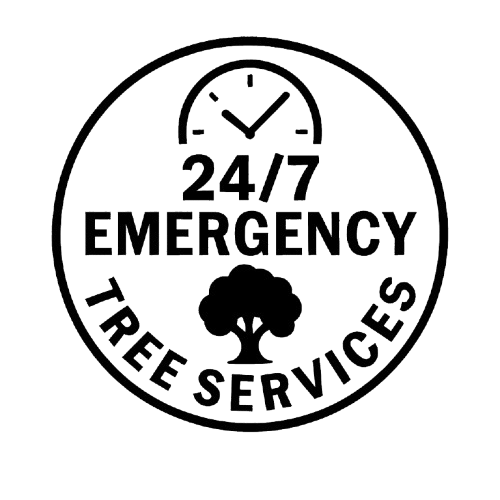Adapting the Bald Cypress to NYC: A Guide to Growing Southern Trees in Northern Urban Landscapes
The Bald Cypress is a unique tree native to the southern United States, most often associated with the swamps and wetlands of Louisiana and Florida. Known for its iconic “knees” and feathery foliage, it has recently become famous for urban areas far north of its original habitat, including cities like New York. While the Bald Cypress may seem unusual for such northern climates, this resilient tree has proven adaptable when given the right conditions. Bald Cypress trees offer several environmental benefits for urban settings like NYC, from flood control to improving air quality. This article explores how the Bald Cypress adapts to the northern climate of NYC, its benefits, and what care is needed to ensure its success in such an environment.
Key Takeaways:
- Climate Adaptability: Despite being native to warm southern climates, the Bald Cypress can thrive in New York City’s colder USDA Zone 7. When correctly cared for, it shows resilience to winter conditions, especially in its early stages.
- Environmental Benefits: The Bald Cypress provides numerous ecological advantages in NYC, including improved air quality, enhanced stormwater management, and creating wildlife habitats, making it an excellent addition to urban landscapes.
- Urban Challenges: While the Bald Cypress can flourish in NYC, it faces challenges such as space constraints, soil quality, and the need for winter protection. Proper watering, pruning, and maintenance are crucial to the tree’s long-term success in northern urban areas.
Characteristics of the Bald Cypress
Appearance
The Bald Cypress is a majestic tree with distinct features that make it stand out in natural and urban settings. Its overall appearance and seasonal changes make it a desirable tree for cityscapes like New York City.
- Conical Shape: The Bald Cypress has a distinctive pyramidal or conical shape, visually striking and functional in growth. Mature trees can grow up to 70 feet tall, providing ample shade and aesthetic appeal for parks, streets, and backyards.
- Foliage: The tree’s feathery, light-green foliage is one of its defining characteristics, lending a soft, elegant appearance in the spring and summer. In the fall, the foliage transforms dramatically, turning a rich orange-brown before shedding its needles, as the tree is a deciduous conifer. This seasonal needle drop is unusual for conifers; most retain their needles year-round.
- Deciduous Conifer: Unlike many evergreen conifers, the Bald Cypress sheds its needles in the winter. This unique trait allows the tree to conserve water and energy during the colder months, helping it adapt to diverse climates, including New York’s winter season.
Adaptability
The Bald Cypress is incredibly adaptable to various environmental conditions, which makes it well-suited for urban planting, particularly in places like NYC, where weather and soil conditions can be variable.
- Thrives in Wet, Swampy Environments: As a native of southern wetlands, the Bald Cypress is accustomed to areas prone to flooding and can flourish in saturated soils. It is often found in swamps and bayous, where other trees might struggle.
- Tolerant of Dry Soil: While it thrives in wet conditions, the Bald Cypress is also highly adaptable to dry soils once established. This versatility makes it a good candidate for areas with fluctuating water availability, such as urban environments that may experience periods of drought.
- Tolerant of Flooding, Drought, and Air Pollution: The tree’s tolerance to extreme conditions—including flooding, drought, and poor air quality—makes it an ideal species for urban environments like New York City. This tolerance ensures that it can withstand the challenges of city life, including pollution and stormwater runoff.
Root System
One of the Bald Cypress’s most fascinating and functional features is its root system, which is significant in its stability and adaptability.
- Deep Roots: The Bald Cypress develops a deep root system that anchors it firmly into the ground, even in areas prone to flooding or high winds. This root structure stabilizes the tree and helps it access nutrients and water deep in the soil, ensuring survival in adverse conditions.
- Knees (Pneumatophores): When grown in particularly saturated conditions, the Bald Cypress develops unique root structures called “knees” or pneumatophores. These root protrusions extend above the ground or waterline, allowing the tree to breathe in oxygen-depleted environments. While these knees are most commonly seen in swampy areas, they may still appear in less wet environments if the soil conditions are right.
Key Characteristics of Bald Cypress
Feature Details
Height Up to 70 feet
Shape Conical, pyramidal
Foliage Feathery, light-green in summer; turns orange-brown in fall.
Type Deciduous conifer (sheds needles in winter)
Adaptability Thrives in both wet and dry soil; tolerates flooding, drought, and pollution
Root System Deep roots for stability; knees (pneumatophores) in waterlogged conditions
Climate Tolerance of the Bald Cypress
The Bald Cypress is a tree known for its impressive adaptability to different climates. Although native to warm regions of the southern United States, this tree has shown remarkable resilience when grown in colder areas such as New York City. Understanding its origin and how it adjusts to colder climates like NYC is crucial for ensuring its successful growth in northern urban environments.
Origin in Warm Climates
- Native to USDA Zones 5-9: The Bald Cypress is native to regions classified within USDA Hardiness Zones 5 through 9. These zones include mild winters and long, hot summers, providing ideal growing conditions for this species.
- Typically Found in Warm Southern Regions: The bald cypress is most commonly found in warm, wet areas like the bayous of Louisiana and Florida. In these regions, it thrives in swamps and along riverbanks, benefiting from high humidity levels and consistent access to water.
- Long Summers, Mild Winters: Bald Cypress trees grow best in regions that experience long, hot summers that fuel their growth and mild winters that don’t expose them to extreme cold. This explains their popularity in southern climates with low risk of frost or severe winter weather.
Adapting to NYC’s Climate
- NYC Located in USDA Zone 7: New York City falls within USDA Hardiness Zone 7, a suitable environment for Bald Cypress trees. This zone typically experiences a moderate climate, with warm summers and cold winters, but not extreme enough to severely affect the tree’s survival. Given proper care, the Bald Cypress can thrive in this zone.
- Tolerates Cold Winters: Although it originates in warmer regions, the Bald Cypress is remarkably cold-tolerant. It can withstand cold winters, making it suitable for planting in northern climates like New York. However, young Bald Cypress trees may be more vulnerable to extreme temperatures, especially during their first few winters. Protecting the trees using wraps or mulch around the base can help shield them from frost damage.
- Survives Temperatures as Low as -10°F: The Bald Cypress has demonstrated an ability to survive in climates with winter temperatures as low as -10°F. This tolerance to cold makes it a viable option for northern urban settings like NYC, provided it receives proper care, particularly during extreme cold spells.
Climate Tolerance Overview of Bald Cypress
Climate Feature Details
USDA Hardiness Zones 5-9
Native Regions Southern U.S. (Louisiana, Florida, etc.)
Typical Climate Long, hot summers; mild winters
NYC USDA Zone Zone 7 (moderate climate, cold winters)
Cold Tolerance Withstands -10°F temperatures without issue
Young Tree Protection Young trees may need protection from frost and strong winds.
Environmental Benefits of Planting Bald Cypress in NYC
When planted in urban areas like New York City, the bald cypress provides numerous ecological benefits. Its ability to thrive in challenging conditions makes it a valuable addition to city landscapes, contributing to stormwater management, improving air quality, and supporting urban biodiversity.
Stormwater Management
- Absorbs Large Amounts of Water: One of the most significant benefits of planting Bald Cypress in NYC is its ability to absorb large volumes of water. During heavy rainfalls, urban areas often struggle with flooding due to impervious surfaces like roads and sidewalks that prevent water from soaking into the ground. In locations where stormwater runoff is a problem, the Bald Cypress’s deep root system helps absorb excess water, lowering the chance of floods.
- Flood Control: Bald Cypress trees are naturally found in wetland environments, making them exceptionally effective at controlling water levels. In urban environments, they can serve a similar role, helping mitigate the impact of heavy rains by slowing down stormwater flow into drainage systems and sewers.
Air Quality Improvement
- Pollutant Filtration: Bald Cypress trees also improve urban air quality by filtering out pollutants such as sulfur dioxide. Their large canopy and abundant foliage help trap dust, smoke, and other contaminants, playing a pivotal role in reducing pollution levels in NYC’s air.
- Urban Air Purification: By improving air quality, the Bald Cypress helps counter the adverse effects of urban smog, making it a vital part of greening efforts in densely populated cities like New York. This benefits human health and improves the overall environmental quality of urban areas.
Wildlife Habitat
- Nesting Areas for Birds and Small Animals: Despite its urban setting, the Bald Cypress can provide essential habitats for wildlife. The tree’s branches provide cover and breeding grounds for birds, squirrels, and other small animals, which supports urban wildlife populations.
- Supports Biodiversity: The tree contributes to urban biodiversity by offering a home for various species, even amid city life. By planting bald cypress, NYC can foster a wider variety of plant and animal life, encourage ecological balance, and improve its green spaces.
Challenges of Growing Bald Cypress in NYC
Soil Requirements
- Prefers Acidic, Well-Drained Soil: The Bald Cypress naturally prefers acidic, well-drained soil, which can be challenging in an urban environment like NYC, where soil conditions are often compacted or lacking nutrients. Adding fertilizer or organic materials to the soil can be necessary to achieve ideal growing conditions.
- Adaptability to Urban Soils: While the Bald Cypress is adaptable to varying soil conditions, it may still struggle in heavily polluted or compacted soils common in cities. Regular testing and adjustment of soil pH levels may be necessary to ensure the tree’s success.
Space Constraints
- Large Root System: The Bald Cypress has an extensive, deep root system that requires significant space to spread. In a dense city like New York, where space is limited, finding suitable locations for growing trees without interfering with buildings or sidewalks can be challenging. Its roots can also disrupt pavement or underground infrastructure if not given enough room to develop properly.
- Street Planting Considerations: When planting Bald Cypress trees along city streets, care must be taken to ensure the tree grows only a little far from sidewalks or buildings. Its large canopy and roots require careful placement to avoid obstructing pedestrians or damaging structures.
Maintenance
- Pruning: Regular pruning maintains the shape and health of the Bald Cypress in an urban environment. Without proper maintenance, the tree can grow too large, causing issues with its roots or canopy spreading too far into streets and public spaces. Pruning helps manage its size and ensure it remains healthy and aesthetically pleasing.
- Protection from Strong Winds and Snow: In NYC, winter can bring strong winds and heavy snowfall, potentially damaging young or vulnerable Bald Cypress trees. Protecting the trees from these elements using wraps or windbreaks and ensuring they are not overburdened by snow accumulation is crucial to their survival during the coldest months.
How to Care for Bald Cypress in NYC
Watering and Irrigation
- Regular Watering, Especially During Dry Spells: While Bald Cypress trees are highly tolerant of wet and dry conditions, they still require regular watering, particularly during their early years and in periods of drought. In urban environments like NYC, rainfall may not meet the tree’s hydration needs, especially during hot summer. Ensuring a consistent water supply is critical to healthy growth, with extra attention during prolonged dry spells.
- Mulching to Retain Moisture and Protect Roots: Applying a layer of mulch around the base of the Bald Cypress is highly beneficial. Mulch helps the soil retain moisture, which lessens the need for regular watering. Additionally, it shields the tree’s roots from temperature changes and aids in weed growth prevention, which can rival the tree for nutrients. Organic mulch, like wood chips, is particularly successful.
Winter Protection
- Wrap Trunks or Use Windbreaks for Young Trees: Young Bald Cypress trees are more vulnerable to cold damage, especially during their first few winters in NYC. Wrapping the trunks with tree wrap or burlap can provide insulation against frost and strong winds. Additionally, installing temporary windbreaks around the tree can shield it from harsh winter winds, which can dry out and damage the tree.
- Avoid Salt Damage from Roads and Sidewalks: Salt that melts snow and ice during winter in urban areas can threaten Bald Cypress trees. The salt can leach into the soil, damaging the tree’s roots and leading to browning of the foliage. To protect the tree, avoid planting it too close to salted sidewalks or streets, and consider creating barriers (such as plastic wraps or physical borders) to shield the tree from salt exposure.
Pruning
- Prune Lower Branches to Maintain Shape and Prevent Obstruction: Pruning is necessary for Bald Cypress tree care, especially in a city like NYC, where space is limited. Pruning lower branches helps maintain the tree’s conical shape and prevents the branches from obstructing pathways, buildings, or other structures. This also helps increase air circulation around the tree, reducing disease risk.
- Remove Any Dead or Diseased Wood: Keeping the tree healthy requires routine inspections and the removal of any unhealthy or dead limbs. Deadwood can attract pests or diseases, which can spread to the rest of the tree. Removing diseased branches prevents the spread of infection and promotes healthier growth by directing the tree’s energy to healthy branches.
FAQs
Can Bald Cypress trees survive NYC’s cold winters?
Yes, Bald Cypress trees are hardy in USDA Zone 7, which includes NYC. However, young trees may require some protection from extreme cold and wind.
How fast do Bald Cypress trees grow in an urban environment?
Bald Cypress trees grow moderately, typically 1-2 feet yearly, depending on soil quality, water availability, and maintenance.
Do Bald Cypress trees require a lot of water in NYC?
While they thrive in wet environments, Bald Cypress trees are drought-tolerant once established. However, regular watering is necessary during dry periods, especially for young trees.
Are Bald Cypress roots invasive in urban areas?
Bald Cypress roots are not considered invasive but do require space to spread. To prevent damage, it’s essential to plant them away from buildings and sidewalks.
Can I plant a Bald Cypress in a tiny NYC backyard?
Yes, but remember that the tree will grow tall and wide. Ensure enough space for its roots and canopy to develop without overcrowding other plants or structures.
Conclusion
The Bald Cypress, though native to the warm, swampy regions of the southern United States, has proven to be an adaptable and resilient tree capable of thriving in northern urban environments like New York City. Its unique ability to manage stormwater, improve air quality, and support urban biodiversity makes it a valuable asset to the city’s green infrastructure. While the tree offers many environmental benefits, it also requires specific care, including regular watering, winter protection, and pruning, to ensure its long-term health and growth. By understanding and addressing the challenges of urban planting, NYC can successfully incorporate the Bald Cypress into its landscape, contributing to a healthier, more sustainable urban environment.




